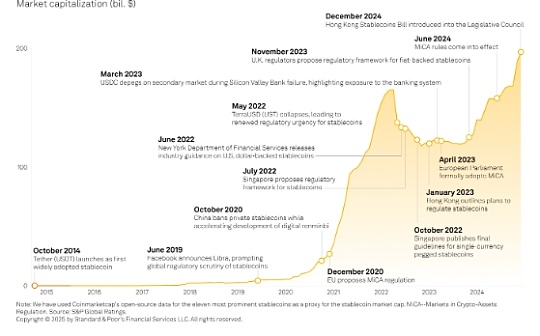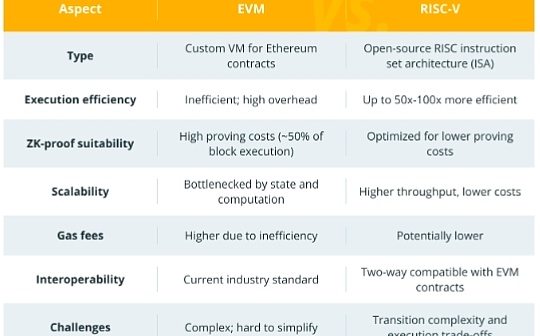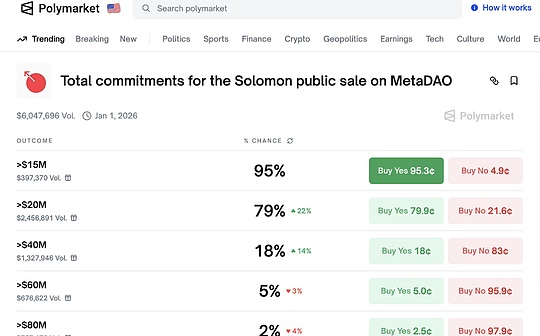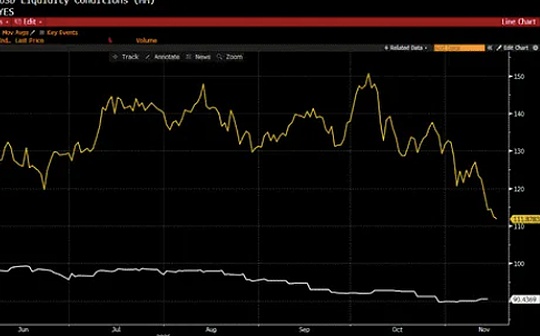
Author: SK Arora, CoinTelegraph; Compilation: Baishui, Bitchain Vision
1. sUSD decoupling explanation: Why did Synthetix stablecoin fall below $0.70
A major and worrying event occurred in the cryptocurrency space: the value of the Synthetix protocol’s native stablecoin sUSD plummeted to $0.68 on April 18, 2025.
The plunge means it is a 31% deviation from the expected peg of the US dollar, a level that is the basis of the stablecoin concept.As the name suggests, stablecoins are designed to maintain price stability, which is crucial for their use as a reliable means of store of value in decentralized finance (DeFi) applications.

For stablecoins like sUSD, maintaining price stability is crucial to ensuring confidence in using it.However, the sharp decline in sUSD value has brought shocks to the cryptocurrency community, creating an atmosphere of uncertainty.
The question is: How did this once stable digital asset fall below its anchor exchange rate?How does this affect the broader cryptocurrency ecosystem?
SUSD decoupling was triggered by a protocol change (SIP-420) that lowered collateral requirements and undermined incentives for stabilizing anchor exchange rates.Coupled with the price decline in Synthetix and liquidity outflow, confidence in sUSD has weakened.
Understand SIP-420 and its impact
SIP-420 introduces a protocol-owned debt pool in Synthetix, allowing SNX stakeholders to delegate their debt positions to shared pools with lower issuance rates.This shift improves funding efficiency, simplifies the pledge process and increases earning opportunities while curbing separate pledges by increasing the collateral rate to 1,000%.
Prior to SIP-420, users who minted sUSD must use SNX tokens for over-staking, maintaining a 750% collateral rate.This high requirement ensures stability but limits efficiency.
SIP-420 is designed to increase funding efficiency by reducing the collateral rate to 200% and introducing a shared debt pool.This means that individual users no longer need to assume their own debts, but instead spread the risks throughout the agreement.
While this change makes it easier to cast sUSD, it also eliminates the personal motivation of users to buy back sUSD when the sUSD price falls below $1.Previously, users would buy back sUSD at a discount to pay off their debt, which helped restore its value.In the shared debt model, this self-correction mechanism is weakened.
The consequences of change
The increase in sUSD supply, coupled with weakening of personal incentive mechanisms, has led to an oversupply of sUSD in the market.Sometimes sUSD accounts for more than 75% of the major liquidity pool, indicating that many users are selling sUSD at a loss.This oversupply, coupled with the decline in SNX prices, further undermines the value of sUSD.
But this is not the first time Synthetix has experienced volatility.The protocol is well-known for its decentralized synthetic asset platform and has also seen volatility in past market cycles, but the recent decoupling is the worst in the history of the cryptocurrency industry.
Synthetix, for example, has faced volatility before — following the 2020 market crash, the mid-2021 DeFi callback and the 2022 UST crash — each exposed vulnerabilities in liquidity and oracle systems.A 2019 oracle vulnerability also highlights its structural vulnerability.
The significance of sUSD decoupling is not limited to this single asset, but also reveals a broader problem in the mechanisms that support crypto-staking stablecoins.
2. What is sUSD?How does it work?
sUSD is a crypto-staking stablecoin running on the Ethereum blockchain, designed to provide stability for highly volatile crypto markets.
Unlike fiat-backed stablecoins that are pegged to the USD through bank-holding reserves such as USDC or Tether’s USDt, sUSD is backed by cryptocurrencies—specifically, SNX, the native token of the Synthetix protocol.
Casting sUSD:
-
The process of minting sUSD involves pledging SNX tokens into the protocol.
-
In return, users will receive sUSD tokens that can be used in the Synthetix ecosystem or traded on the open market.
-
To ensure the value of the sUSD token is stable, it adopts oversized, which means that the number of SNX tokens pledged by the user must exceed the value of the minted sUSD.
Historical mortgage rate (C-Ratio):
-
Historically, the collateral rate has been set at around 750%, which means that for every minted sUSD, users will need to pledge SNX tokens worth $7.50.
-
High collateral rates can buffer SNX price fluctuations, which is crucial to the stability of the system.
To improve capital efficiency, Synthetix launched SIP-420, bringing significant changes:
-
The required C ratio dropped from 750% to 200%, allowing users to cast more sUSD with less SNX.
-
Previously, every user was responsible for their own debts.
-
With SIP-420, debt is now shared by a collective pool of funds, which means individual users are less directly affected by their own behavior.
Due to these changes, coupled with market factors such as the decline in SNX prices, sUSD has been having trouble maintaining its peg to USD 1, and the trading price fell to USD 0.66 in April 2025.The Synthetix team is actively investigating solutions to stabilize sUSD, including the introduction of new incentives and the exploration of ways to enhance liquidity.
Did you know?Synthetix uses dynamic C ratios to manage system stability.Your active debt changes with the performance of the trader; profits increase debt, and losses decrease debt.Through the delta neutral mechanism in perpetual contracts, liquidity providers absorb imbalances until reverse trading returns to balance.This is a system that shares the risk of volatility.
3. Is sUSD an algorithmic stablecoin?
A common misconception surrounding sUSD is to classify it as an algorithmic stablecoin.It should be clarified that sUSD is not an algorithmic stablecoin, but a cryptocurrency collateral.
This key distinction is crucial because algorithmic stablecoins (such as the now-infamous TerraUSD (UST) rely on algorithms and smart contracts to manage supply and demand, attempting to maintain their anchor exchange rates, and often without actual collateral support.sUSD, by contrast, relies on the value of the underlying collateral (SNX tokens) to maintain its price.
The anchor exchange rate of sUSD is not as fixed as stablecoins supported by fiat currencies such as USDC.The Synthetix system allows some natural fluctuations in the anchor exchange rate.While sUSD’s goal is to stay near $1, it is not a fixed exchange rate—instead, the protocol relies on intelligent built-in mechanisms that help restore anchored exchange rates when exchange rates fluctuate.
The following are the key mechanisms after SIP-420:
-
Reduce mortgage rate (200%):As mentioned above, the mortgage rate required to cast sUSD is reduced, allowing more sUSD to enter circulation with less SNX.This improves capital efficiency, but also increases the risk of decoupling.
-
Shared debt pool:All pledges no longer bear their own debts, but instead share a collective debt pool, which weakens the natural anchoring recovery behavior.
-
sUSD locking excitation (420 pools):To reduce sUSD in circulation and help restore anchoring, users are motivated to lock their sUSD for 12 months in exchange for some protocol rewards (e.g., 5 million SNX).
-
Liquidity incentives:The agreement provides high-yield incentives for liquidity providers supporting sUSD trading pairs, helping to absorb excess supply and improve price stability.
-
External income strategy:The protocol plans to use minted sUSD in external protocols such as Ethena to generate benefits, which helps offset systemic risks and enhance stability mechanisms.
These recovery mechanisms mainly play a role through incentive mechanisms.For example, if sUSD is trading below $1, users who pledge SNX may be incentivized to buy sUSD at a discounted price to pay off their debt at a lower cost.This system relies heavily on market dynamics and incentive mechanisms for participants to stabilize the anchoring of the exchange rate.
Do you know?The mortgage rate (C-Ratio) is calculated as: mortgage rate (%) = (Total SNX value (in USD) / Active debt (in USD) × 100. It changes with the price of SNX or the share of your debt – which is essential for minting synthetic assets and avoiding penalties.
4. Synthetix recovery plan: How to stabilize sUSD
Synthetix has developed a comprehensive three-phase recovery plan that aims to restore the stablecoin’s peg to the dollar and ensure its long-term stability.
Synthetix founder Kain Warwick recently published an article on Mirror, proposing a solution to fix sUSD stablecoins.His plan outlines how the community works together to restore hooks and strengthen the system.
1. Restore good incentive mechanisms (“carrots”)
-
Users who lock sUSD will receive SNX rewards, which will help reduce the number of sUSDs on the market.
-
Two new earning pools (one for sUSD and one for USDC) will allow anyone to provide stablecoins and earn interest – no SNX required.
2. Apply gentle pressure (“stick”)
SNX stakers now have to hold a small portion of their debt in sUSD to continue to earn.
If the sUSD anchor rate falls further, the required sUSD holdings will rise—which will increase pressure to help repair the anchor rate.
Warwick believes the plan will restore the natural cycle: When sUSD is cheap, people will have the motivation to buy and repay debts, pushing up prices.Kain estimates that restoring the anchored exchange rate may take less than $5 million in buying pressure – which is totally feasible if enough people are involved.
Once the incentives are re-aligned and sUSD resumes anchored exchange rates, Synthetix will launch a major upgrade: eliminating old systems, launching faster trading and multi-collateralized Perps v4 on Ethereum, introducing snaxChain to build a high-speed synthetic market, and minting 170 million SNXs to drive ecosystem growth through new liquidity and trading incentives.
5. SUSD oscillation: A key risk that cryptocurrency investors cannot ignore
The recent sUSD decoupling incident has once again warned of the inherent risks of crypto-staking stablecoins.While stablecoins are designed to provide price stability, their reliance on external factors such as market conditions and underlying collateral means they are not immune to volatility.
Crypto-staked stablecoins like sUSD face higher risks due to their reliance on volatile assets such as SNX.Market sentiment, external events, and major agreement changes can all quickly disrupt stability, making it more likely to decouple—especially in the rapidly developing, growing DeFi sector.
Here are some key risks that cryptocurrency investors should be aware of:
-
Reliance on collateral value:The stability of sUSD is directly related to the price of SNX.If the SNX price drops, sUSD is prone to insufficient collateral, threatening its anchoring of the exchange rate and causing its devaluation.
-
Agreement design risks:Protocol changes (such as the introduction of SIP-420) may have unintended consequences.Improper incentive mechanisms or poorly executed upgrades may undermine the balance that maintains the system’s stable.
-
Market sentiment:Stablecoins are based on trust, and if users lose confidence in the ability of stablecoins to maintain an anchor exchange rate, their value may drop rapidly even if the protocol is designed reasonably.
-
Incentive mechanism imbalance:The elimination of individual incentives, such as those in the 420 pool, may undermine the protocol’s ability to maintain an anchor exchange rate, as this reduces the user’s motivation to stabilize the system.
-
Lack of redundancy:Stablecoins should have a strong fallback strategy to reduce the risk of single point failure.The failure of a mechanism, such as a protocol upgrade or design flaw, can quickly turn into a full-scale crisis.
To protect their own security, users should diversify their investment exposure to stablecoins, pay close attention to protocol changes, and avoid over-reliance on crypto-collateralized assets such as sUSD.It is crucial to keep abreast of governance updates and market sentiment as sudden changes can trigger decoupling.
Users can also reduce risk by using stablecoins with stronger collateral support or built-in redundancy mechanisms, as well as regularly checking DeFi positions to detect signs of under-collateralization or systemic instability.








